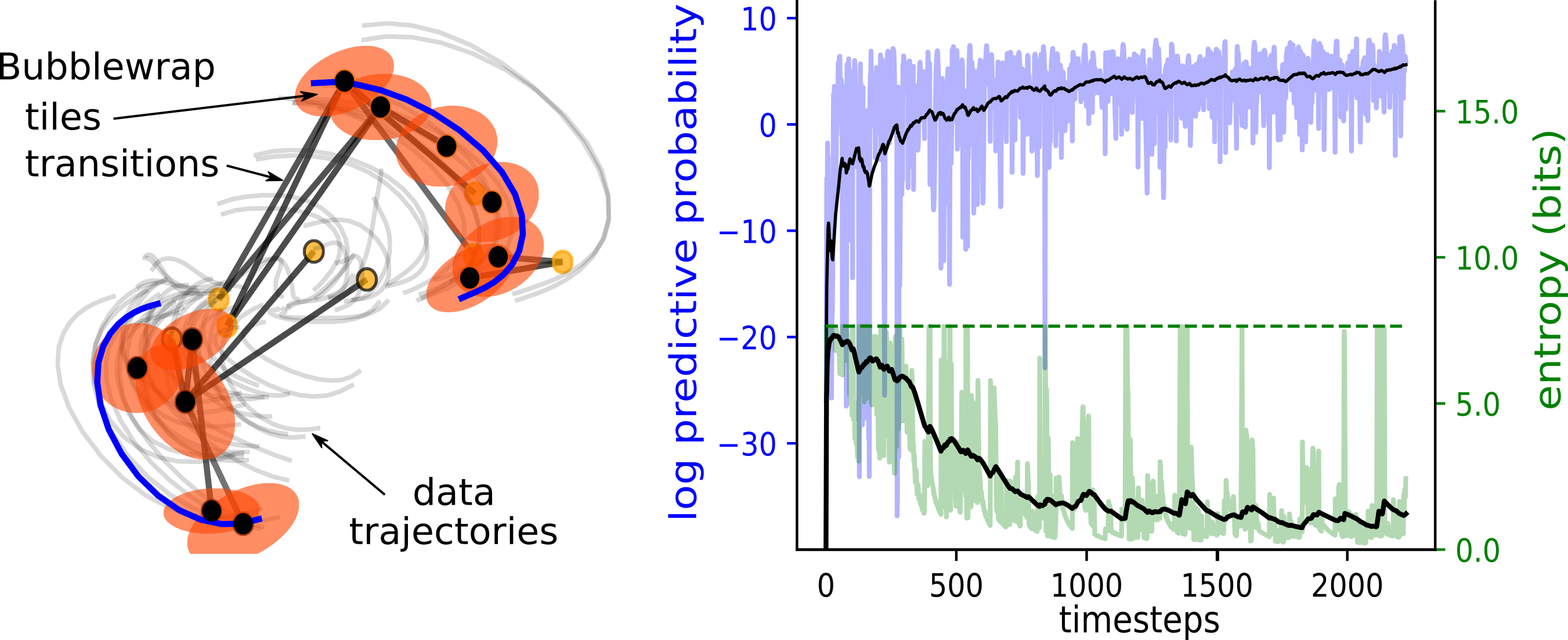Bubblewrap: Online tiling and real-time flow prediction on neural manifolds

We developed a new method for approximating dynamics as a probability flow between discrete tiles on a low-dimensional manifold. The model can be trained quickly and retains predictive performance many time steps into the future, and is fast enough to serve as a component of closed-loop causal experiments in neuroscience. Our recent preprint on this work can be found here.




